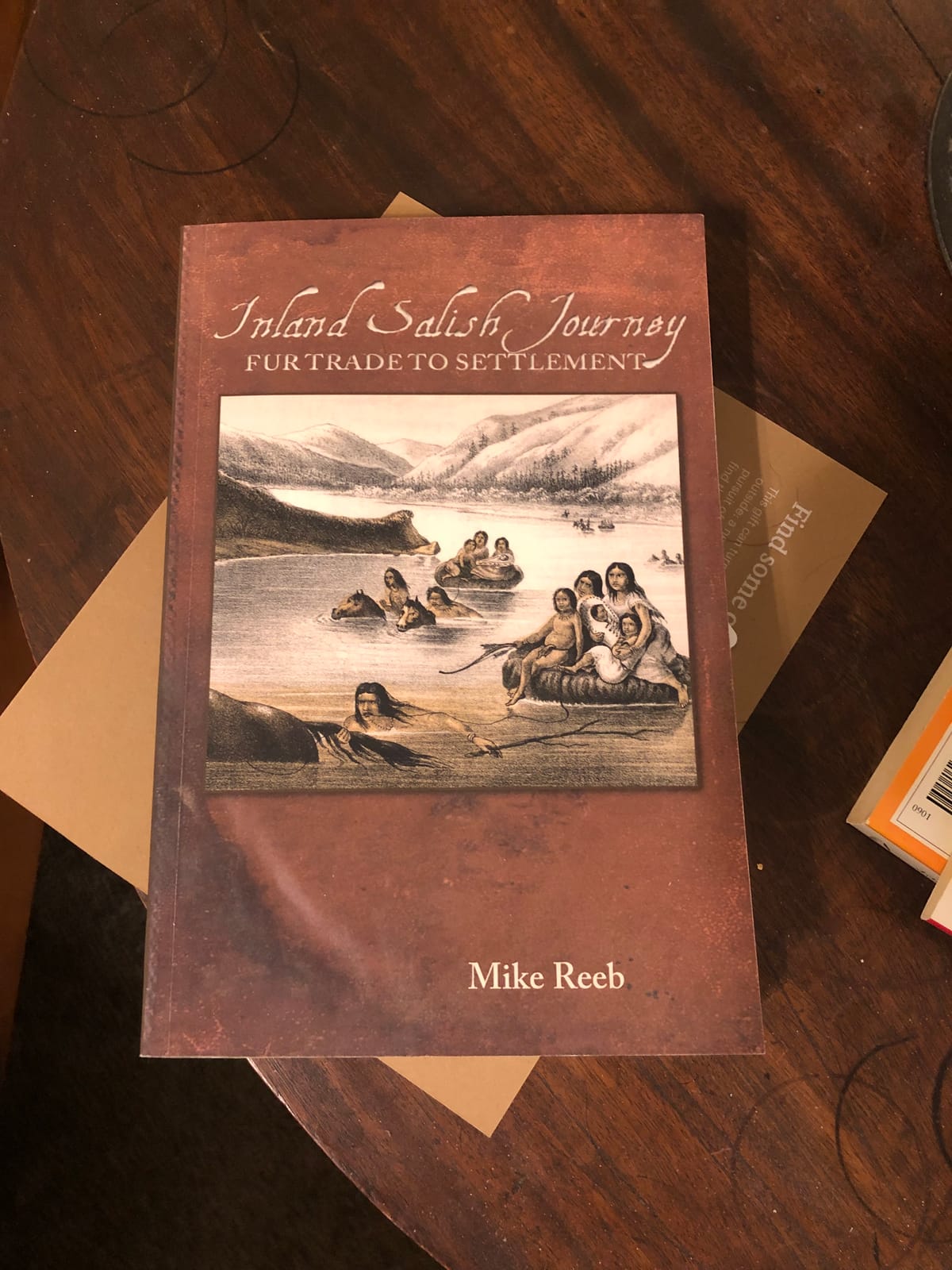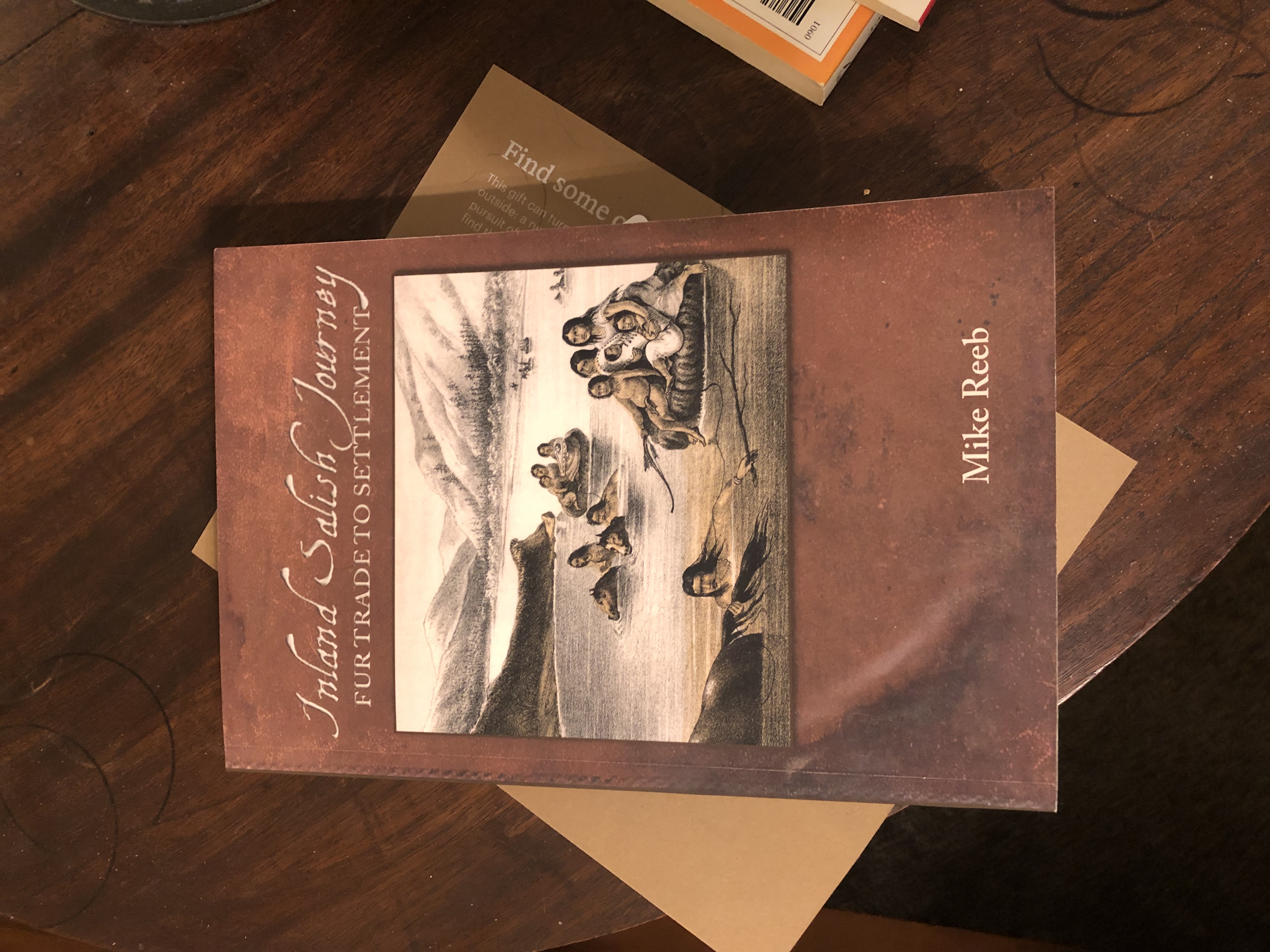What am I Reading?
Inland Salish Journey Fur Trade to Settlement

Winter is a good time to get some reading done.
When you drive east of Sandpoint you see signs referring to the route along the Clark Fork River referring to the ‘Road to the Buffalo’. If you have wondered what this means, as I have, this book answers that question.

This book, Inland Salish Journey: Fur Trade to Settlement, is a surprisingly engaging collection of the written material on the inland Northwest during the years of fur trade up to the arrival of homesteaders and general settlement. This is the period from Lewis and Clark’ expedition (1805) to about 1865.
The term Salish refers to an indigenous language group that stretches from the West coast of Washington State to the Inland Northwest. In this book it includes only the inland tribes of the Spokane, Couer d’Alene, Pend Orielle (Kalispel) Flathead, and Colville tribes. Some of the names are French indicating the influence of French speaking trappers. These tribes all lived in the general vicinity in which I now live.
The source of the material that makes up this book are the different accounts of traders and fur trappers. These were powerful commercial enterprises at the time and as such took meticulous records. They are of course one sided as the Indians 1 did not possess a written language. Never-the-less this account gives a surprisingly balanced approach to the nature of the Salish tribes and their neighbors. It is of course subject to the norms of moral judgement of the Westerners from Canada and the USA at the time. The key difference from this account is that these Westerners lived amongst and traded with these tribes for a few decades. These were generally relationships of trade, commerce but family as well. Until the late 1800s there were no Western women present so traders tended to have Indian wives.
For me there were two major themes in amongst the struggles for survival, trade, battles, and wars. One is that the horse enabled these Salish peoples to travel to the east to hunt buffalo. Buffalo are not indigenous to the region and the distance to the in Western Montana was great on foot. Before the horse, Indians used dogs to haul small travois as pack animals but horses massively changed this. (The Salish word for horse is ‘dog-elk’ presumably, dog for hauling and elk for size.)
Horses were introduced in in the late 15th and early 16th century by the Spanish coming up through Mexico. It took something like 200 years for the horse to make its way into this part of the world. The horse helped the Salish establish the ‘Road to the Buffalo’ along the Clark Fork River into today’s Montana plains. The horse also enabled them to haul the dried meat and furs back home for the winter. The meat and hides were also sold to traders. The traders needed the meat as part of their subsistence and the hides were used to make fashionable coats back in the Eastern US.
My impression was that the horse so radically altered the lives of the Salish that the environment was changed as they exploited the new capabilities. Each family needed at least 8-10 horses to travel with and some Salish possessed up to 30 horses. Now imagine tribes of 50 or 60 lodges (family-units) on the move and suddenly the land must support hundreds of grazing horses which are confined to mostly the river valleys that were not as forested.
Furthermore as the tribes proceeded to hunt buffalo more effectively they began to deplete their numbers until there were none in the western range of the plains. The muskets they traded for were not used for buffalo hunts. Arrows could be shot more rapidly on horseback and a good hunter could kill a buffalo with one shot from behind the ribcage up into the heart. A well-organized hunt could kill 80-100 buffalo on a single day.
The best part of this book was the overall impression of the Salish and other tribes. They were treated as human beings, complex individuals with compassion, honesty, and trustworthiness. It was heartening to see them described by contemporary whites not as savage, primitive, or stupid. Yes they fought each other and there was theft and murder and assault. Different tribes and groups within tribes take on differing characters in terms of Western (or even Indian moral values).
The book is long and comprehensive and has been extensively researched. A monumental amount of work for an amateur trapper and historian Mike Reeb. He is local to the area and the book itself was published locally.
If you want to hear an alternative narrative to the West we are used to hearing I can recommend it. The end is no better than one would expect, it is not a fairy tale, but as an honest exposition I found it revealing and enlightening.
I am aware the an alternate terms of Native American or First Nations in Canada may seem more politically correct however it is my understanding that many Indians prefer the term Indian and have reclaimed it. Let’s just say the nomenclature is contested. If you find yourself offended I can only apologize and ask you to mentally substitute whatever term you think is appropriate. ↩


